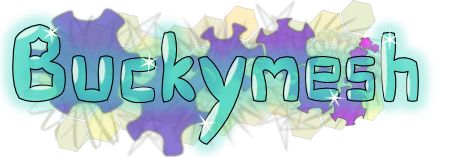Previous Design (continued)

Join a long and short nanotube together, using one shallow saddle and one deep saddle: (these pictures are not ray-traced like the rest of this site as they were done a long time ago.)
Previous Design - Assembly
If you take three of these and connect them together by the 'arms', you get this:
Unlike all the other molecules shown on this site, the molecule above is not quite at its lowest energy point i.e. the two 'arms' protruding from the longest nanotube will tend to move away from each other a little. However, once three of them are joined together this is no longer a problem.
The shallow saddle connects the two nanotubes together at 120 degrees. The deeper saddle connects the two nanotubes together at 60 degrees.
Join one long and two short nanotubes together, using two shallow saddles and two deep saddles (the ones touching at the top):
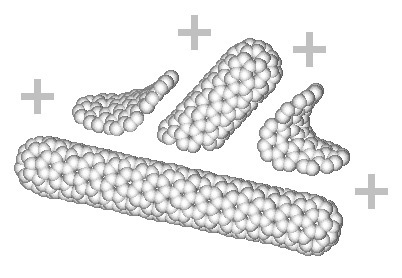


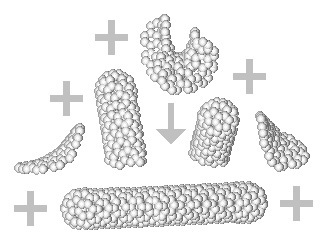
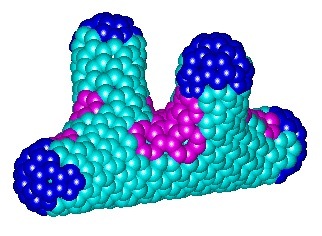
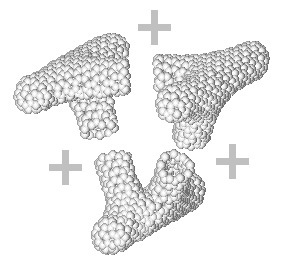



Nearly everybody has seen cranes. No, not the birds, but rather the tall machines used for constructing buildings.
Make a small one of these using three of the above molecules joined together (the middle one has to be a mirror image of the other two):
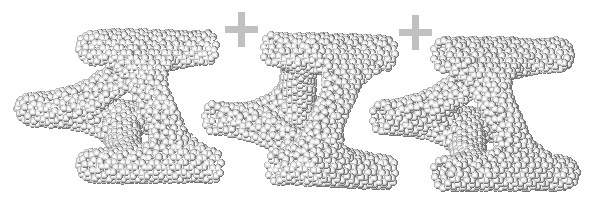
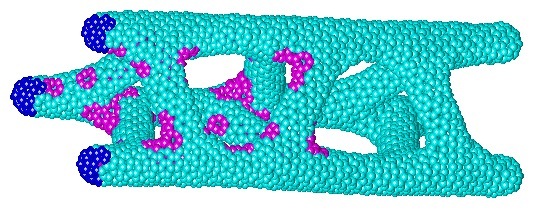

We could make this as long as we want. For example, we could join five of the sections together to get this:

End on, one of the above would look like this:
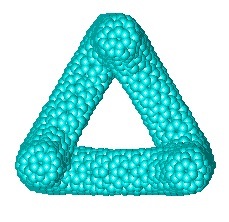
Some cranes have a square cross-section because it is easier to put them together that way. The ones here have a triangular cross-section for the same reason, and because they are stronger that way.
Imagine that this crane is just a strut and join several of them together into a much larger crane. Let's call it a super-crane. Here is two cranes (sort of) connected:
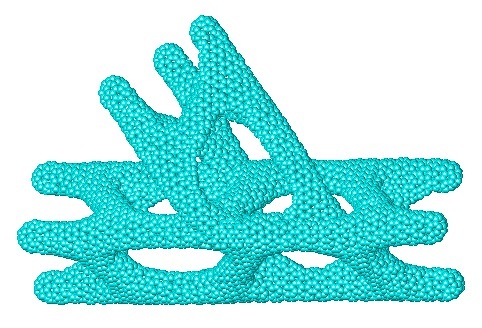
To make a complete super-crane, you need nine short cranes and three long cranes (compared to the one and a bit you can see above).
If you looked end on at a super-crane, it would look something like this:
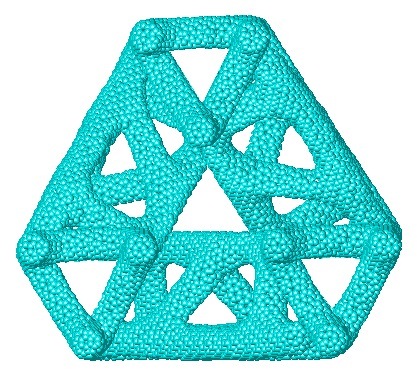
Use this super-crane as the strut of an even larger crane. Let's call it a super-super-crane. Use the super-super-crane as a strut in an even larger crane. Repeat several times. To get something as big as you, you will need to repeat it about another dozen times.
At each scale, if you looked at it end on, it would look similar to the one above (albeit somewhat more complicated). This makes it self-similar, much like fractals. See also here.
The above pictures are not entirely accurate, as the limitations of my machine prevented me from joining and optimizing cranes due to the large number of atoms involved. This could be done relatively easily on a sufficiently fast computer. (I also had to do some minor touch-up of the bottom image to make it look more accurate.)
For the same reason, I do not have a picture of a super-crane from the side, so you will have to imagine it. It looks basically the same shape as a crane (again, somewhat more complicated). So does a super-super-crane.
A large (e.g. as big as you) crane would look like it was made of struts which were made of smaller struts, which were made of even smaller struts etc. I think by now you've got the idea.

